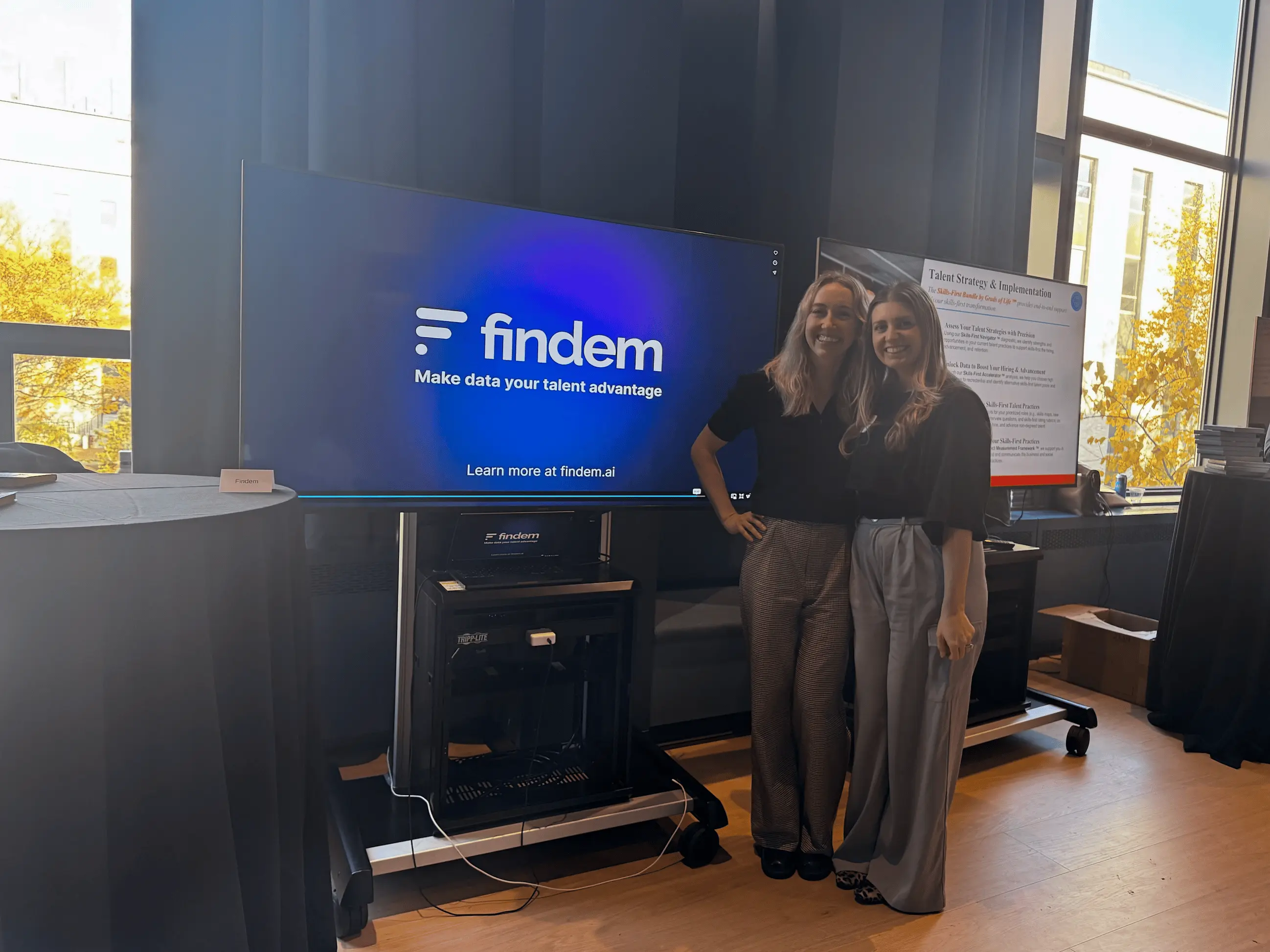.svg)

Artificial intelligence is steadily moving from experimental pilot to standard practice across HR. Its promise is large: automate what slows teams down, uncover talent others can’t see, and deliver fairer, faster, more data-driven decisions.
But that promise arrives with risk. Poor data quality can reinforce bias. Automation can dull human judgment. Regulations are tightening. And while AI can help solve inefficiency, it also raises deep questions about accountability and trust.
This guide offers a grounded look at how HR leaders are putting AI to work — where it’s proving most useful, what pitfalls to watch for, and how to evaluate platforms responsibly.
Use cases for AI in HR
Resume screening
For years, resume screening meant long hours scanning hundreds of applications or letting basic software filter by keywords. Those approaches often favored pedigree over potential.
AI is changing that equation. Modern models can identify signals that a candidate is likely to succeed — patterns in experience, growth rate, or impact — not just the presence of specific terms. These tools can drastically narrow review time while surfacing overlooked talent.
Still, the final decision belongs to people. Even the best AI-driven screening works best when human recruiters validate and interpret its insights.
AI for sourcing
Sourcing has evolved from a search exercise to a discovery discipline. Beyond finding new candidates, AI can rediscover qualified people already in your orbit — past applicants, silver medalists, referrals, and alumni — by refreshing their data and matching them to new openings.
It can also reveal passive candidates outside the usual channels, using attributes like role tenure or contribution history rather than just job titles. That shift reduces bias and levels the playing field by emphasizing skills and potential over pedigree.
AI for talent acquisition
Recruiting has always balanced scale and personalization. AI can now help deliver both.
At its best, AI recruiting automates administrative load — scheduling interviews, parsing feedback, nudging candidates — while supporting genuine, individualized communication. Instead of generic outreach, recruiters can send context-aware notes like, “We noticed you led a product launch during a downturn — that’s the kind of resilience we value.”
Some systems analyze recorded interviews or summarize candidate feedback for hiring managers. Others create transparent status updates so candidates always know where they stand. The goal isn’t to replace human connection, but to make room for more of it.
Predictive analysis
HR analytics powered by AI can forecast what’s coming, not just report what’s already happened.
Predictive models can estimate turnover risk by team or role, highlight potential successors who haven’t held a similar title before, and simulate the impact of policy or compensation changes.
Accuracy here depends on data quality and domain specificity. Generic models trained on public data often miss HR’s contextual nuances. Domain-specific AI — systems built to understand job hierarchies, skills taxonomies, and company context — deliver far more reliable guidance.
AI automation
AI and automation together are quietly rewriting HR operations. Deloitte estimates that in the near future, AI could handle over 80% of administrative and operational HR tasks, freeing teams to focus on strategy, culture, and workforce planning.
Automated onboarding flows can answer routine questions, schedule trainings, and issue reminders. Chat assistants can handle basic HR inquiries while routing sensitive cases to people.
The key, again, is oversight. AI automations should be regularly audited and updated. “Set and forget” is the fastest way to drift into compliance or experience issues.
Types of AI used in HR
AI is not a single technology but a family of capabilities. Understanding their distinctions helps HR leaders choose tools responsibly.
Generative AI
The most visible form of AI, generative systems create text, visuals, or code. In HR, they’re often used to draft job descriptions, FAQs, or candidate communications.
Used responsibly, they save time. Used blindly, they risk amplifying bias or producing generic output. Human review for accuracy and tone remains essential.
Vertical (domain-specific) AI
Vertical, or domain-specific AI, is built to understand HR data and context rather than general information scraped from the public web.
These systems know that a “lead engineer” at a startup and at a Fortune 500 company reflect different scopes of responsibility. They can map career trajectories, interpret internal mobility, and connect performance outcomes with hiring signals.
Conversational AI
Basic chatbots could answer simple yes/no questions. Conversational AI now understands natural language, allowing richer dialogue with candidates and employees.
Used in recruiting, it can pre-qualify applicants, explain next steps, and even collect feedback — while escalating complex or sensitive conversations to human recruiters. The result is faster communication without losing empathy.
Agentic AI
Agentic AI takes automation a step further. These systems can act independently within defined boundaries to achieve an outcome.
Imagine a recruiting agent that notices a pipeline running thin, searches multiple databases, and re-fills it — all without being prompted. Training Magazine describes agentic AI as able to “act on its own, make complex decisions, and adapt with minimal human supervision.”
The promise is major efficiency; the challenge is governance. Clear guardrails, audit logs, and escalation paths are mandatory.
Multi-agent AI
When multiple agents work together — for example, one handling sourcing, another running outreach, and another scheduling interviews — you have a multi-agent system.
These agents coordinate through an orchestration layer, communicating to complete workflows end-to-end. Done well, this can dramatically reduce hand-offs and speed up hiring cycles.
Cognitive agents
Cognitive agents extend beyond task execution. They can reason, negotiate, and adapt dynamically, learning from outcomes and adjusting their approach. Many see them as the foundation for “digital coworkers” — systems that collaborate, not just assist.
As with all advanced AI, the focus must remain on transparency and explainability. If a system learns on its own, HR must still be able to trace why it recommended a decision.
Legal and security considerations
AI can amplify both impact and risk. Every organization using it in HR needs a clear framework for compliance, security, and governance.
Legal risks and how to mitigate them
If AI influences hiring, promotion, or pay, companies are responsible for its outcomes. To mitigate risk:
- Commission regular, third-party bias and fairness audits.
- Document decision logic and maintain explainability records.
- Test for adverse impact across demographic groups.
Many jurisdictions are introducing audit or disclosure requirements. Staying ahead of them is not just compliance — it’s reputation management.
Security considerations
AI systems rely on sensitive data: candidate resumes, employee histories, compensation records. Safeguarding that information requires:
- Proven data provenance and encryption
- Strict access controls and user permissions
- Regular penetration testing and incident response plans
- Vendor due diligence on privacy standards (GDPR, CCPA, ISO, SOC 2, etc.)
Findem, for instance, builds security and compliance into its architecture, ensuring human oversight and full auditability at every step.
AI governance
Strong governance keeps innovation aligned with ethics and policy. A simple framework includes:
- Clear accountability (RACI charting for AI operations)
- Defined model-lifecycle management — from design through monitoring
- “Human-in-the-loop” checkpoints before major actions
- Transparent reporting for leaders and regulators
Governance is what turns responsible AI from a principle into a practice.
Implementation
Rolling out AI in HR isn’t just a technical deployment. It’s an organizational change effort.
- Assess readiness: Review data hygiene, integration points, and process maturity. AI magnifies both strengths and weaknesses — clean, complete data is foundational.
- Start small: Pilot one workflow (for instance, applicant rediscovery or interview scheduling) with clear KPIs. Early wins build confidence and help define best practices.
- Scale intentionally: Train users, codify oversight processes, and align AI goals with business objectives. Expansion without governance invites risk; governance without adoption stalls progress.
- Iterate: AI systems learn continuously — so should the teams managing them. Treat implementation as an ongoing capability, not a one-time project.
Common implementation challenges
Even with good intent, many AI initiatives stall. The common culprits:
- Poor data quality or coverage: If training data skews toward top performers only, predictions will reflect that bias.
- Integration friction: Disconnected systems create duplicate or missing records, undermining results.
- Skills gaps: Recruiters may lack AI literacy or trust; training and change management matter as much as technology.
- Unclear ownership: Without defined KPIs or leadership sponsorship, AI tools can languish unused.
McKinsey calls this the moment for leaders to make “bold AI commitments” — balancing innovation with active reskilling and support.
Enterprise applications of AI in HR
At scale, AI is reshaping how large organizations plan and grow their workforces.
Strategic workforce planning
Models can compare current skills against future needs, highlight gaps, and suggest build-versus-buy strategies.
Internal mobility and upskilling
Employees can see what roles match their skills and what training bridges the gap, improving retention.
Diversity analytics
AI can surface where candidates drop out of the process, revealing structural bias — for example, attrition at a certain interview stage among caregivers or specific geographies.
Global support and shared services
AI agents can help HR service centers scale without adding headcount, maintaining consistent service quality across time zones.
How to choose the right AI platform
The AI vendor landscape is crowded and often opaque. Use these criteria to cut through marketing claims.
Depth of AI
What to look for: Domain-specific models tuned to HR data, not generic language models
Transparency & security
What to look for: Clear explanation of model logic, bias testing, and compliance certifications
Ease of integration
What to look for: Proven connections to your ATS, CRM, and HRIS systems
Total cost of ownership
What to look for: Consolidation savings plus downstream value (speed, quality, reduced agency spend)
Roadmap and references
What to look for: Evidence of maturity, stability, and customer success stories
How to measure ROI of AI applications
Without metrics, AI adoption becomes faith-based. The best measurement frameworks link HR outcomes directly to business value.
Core metrics:
- Speed: Time-to-fill, time-to-first contact, or time-to-interview reductions
- Quality: Higher acceptance rates, stronger performance proxies, improved retention
- Cost: Reduced spend on agencies or job boards, lower software sprawl
- Risk reduction: Fewer compliance issues, better documentation of decisions
To prove ROI, establish before-and-after baselines and track progress quarterly. AI doesn’t just cut costs; when used well, it accelerates business readiness — enabling faster launches, smoother hiring cycles, and better alignment between workforce and strategy.
Learning and iterating with AI for HR
Every implementation teaches something. What distinguishes leading HR teams is how quickly they learn from outcomes and adapt their AI practices.
AI isn’t a silver bullet — it’s a catalyst for disciplined experimentation. HR leaders who start small, measure results, and evolve governance earn both credibility and capability.
Findem’s experience shows that sustained success depends on human-in-the-loop design. AI can surface insight, but judgment still defines value.
As HR becomes increasingly AI-enabled, the future belongs to teams that can use technology to amplify — not replace — human understanding.


.svg)








